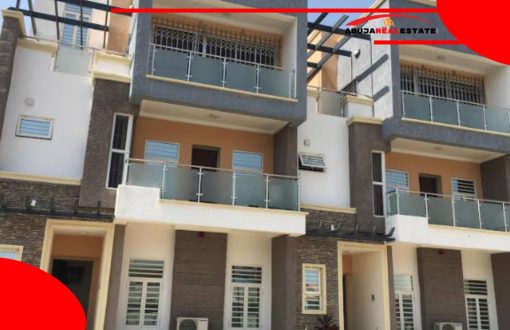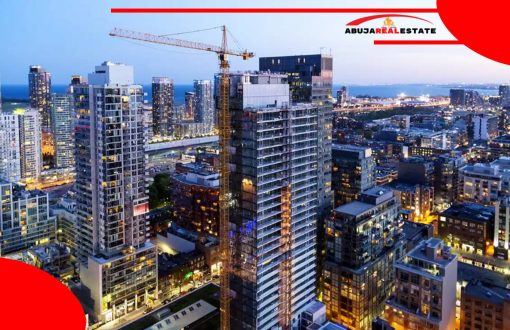Why Kyami and Apo Have Become Prime Locations for Smart Real Estate Investment

As Abuja’s skyline quietly reshapes itself, two neighborhoods—Kyami and Apo—have emerged from the city’s steady growth as magnets for smart real estate investment. Like a well-plotted anime arc where supporting characters rise to prominence, these areas have moved from periphery to prominence through improving infrastructure, strategic planning, and a demographic that increasingly values convenience over distance. Investors looking closely see opportunity in more than raw land value; they see communities beginning to deliver the services and lifestyle that modern buyers demand.
Kyami’s appeal is rooted in accessibility and foresight. Positioned along routes linking commercial hubs and the city center, Kyami benefits from road upgrades that shorten commute times and make the area more attractive to professionals. Developers have responded with gated estates and mixed-use projects that blend residential comfort with retail convenience. The result is a neighborhood that feels planned rather than accidental: wider streets, proper zoning, and amenities that support daily life.
Read Also: Abuja Real Estate: Is Real Estate Business Lucrative in Abuja?
Apo shows a complementary pattern. Historically associated with more modest, informal settlements, Apo is transforming as municipal services extend and private developers step in. Water and power reliability, once the chief concern, have improved in pockets—making phased development feasible and reducing risk for new builds. Where Kyami’s strength is planned connectivity, Apo’s is affordability paired with upward mobility: smaller plots and lower entry costs create fertile ground for investors focused on rental demand and steady cash flow.
Both neighborhoods benefit from a broader wave: Abuja’s urban expansion is shifting demand outward. As central districts saturate and prices climb, buyers look to the periphery for value and future appreciation. Kyami and Apo occupy key transit corridors or sit near employment nodes, so land there has been historically undervalued compared to downtown equivalents, offering lower-cost entry with plausible paths to capital gains.
Market dynamics in Kyami and Apo also reflect changing buyer priorities. Today’s residents prize mixed-use living—places where a short walk brings groceries, schools, and social spaces. Developers who anticipate these needs perform better. In Kyami, several estates incorporate pocket retail and secured perimeters—features that resonate with commuters who want to reclaim time and reduce friction. In Apo, smaller-scale developments yield high rental returns because the local labor market supplies steady demand from workers seeking affordable, nearby housing.
Risk remains. Land tenure issues, delayed approvals, and inconsistent service delivery are realities across many Nigerian cities and can affect returns. Smart investors mitigate these risks by doing due diligence: verifying titles, confirming utility access, and engaging local planners to understand zoning trends. Partnering with reputable developers and insisting on phased payment structures and project milestones reduces exposure and makes projects more bankable.
Commercial activity follows housing. Where families settle, commerce soon follows. Retail clusters, schools, and clinics have started to take root in both neighborhoods, responding to population growth. For investors who favor diversification, combining residential projects with small commercial plots creates balanced portfolios that capture rental income and long-term appreciation. The rise of remote work and flexible employment also swells demand for affordable housing near reliable services.
Transport projects and road upgrades underpin much of the optimism. Improved roads reduce transaction costs and broaden the effective labor market for businesses, which stimulates rental demand from employees seeking affordable, nearby housing. When transit corridors are prioritized by municipal authorities, neighborhoods on those lines typically appreciate faster because accessibility converts directly into daily convenience. Investors monitoring municipal plans and prioritizing sites on confirmed upgrade paths tend to find clearer routes to value realization.
Demographics add another layer. Abuja’s young population is entering adulthood and starting families, creating demand for starter homes, schools, and neighborhood services. Kyami tends to draw slightly older, upwardly mobile buyers willing to pay premiums for planned estates and security, while Apo attracts younger families and renters who prioritize affordability. This segmentation allows developers to tailor products and investors to target distinct market niches.
A practical advantage is the availability of larger land parcels at competitive prices. Inner-city plots are often fragmented and costly; Kyami and Apo frequently offer opportunities to assemble contiguous land for sizable projects. Economies of scale can lower per-unit development costs and improve viability. Larger projects attract institutional capital—developers and funds—who bring financing capacity and credibility, further enhancing an area’s investment profile.
Sustainability and amenities are increasingly non-negotiable. Developments that integrate reliable borehole systems, waste management plans, and green spaces attract tenants and buyers. Investors prioritizing these features improve occupancy and resale prospects. In Kyami and Apo, the most successful projects balance practical infrastructure with thoughtful design, creating livable neighborhoods rather than simple build-and-sell schemes.
Investors should also consider exit strategies and financing structures. Short-term buy-and-rent approaches work well in Apo, where strong rental demand produces steady cash flow, while Kyami favors mid-term development and resale to owner-occupiers who value planned living. Hybrid strategies—developing a mix of affordable rental units alongside premium plots—allow portfolios to hedge cyclical risk. Local partnerships matter: engaging community leaders, hiring local contractors, and maintaining transparent communication with buyers reduce friction and protect project timelines.
Read Also: Real Estate Boom in Pyakasa: Developers Launch Massive Land Sales & Promos in Abuja Suburb
Indicators matter more than hype. Track utility connections, school openings, and arrival of retail anchors. Watch for increases in building permits and clustered developments—these are signals of sustained growth. Measured against these indicators, Kyami and Apo offer more than potential; they present a mapped pathway for disciplined investors to participate in Abuja’s unfolding urban arc.
Kyami and Apo are not speculative fads; they reflect measurable urban shifts. For investors willing to do the groundwork—legal checks, developer vetting, and sensitivity to local needs—these neighborhoods offer a sensible entry into Abuja’s next phase of growth. As infrastructure improves and community amenities multiply, Kyami and Apo stand poised to reward investors who couple prudence with patience. For anyone mapping Abuja’s real estate future, these locations merit serious consideration.


